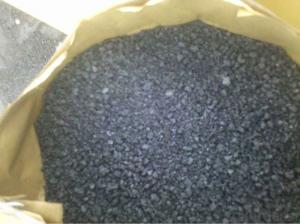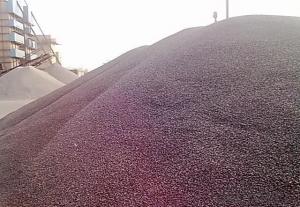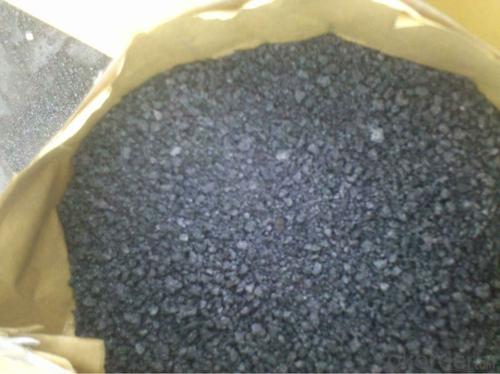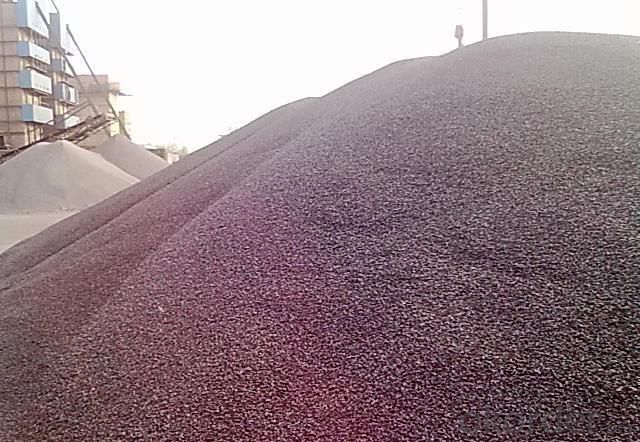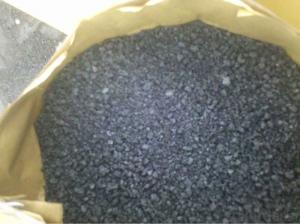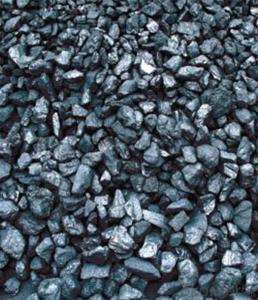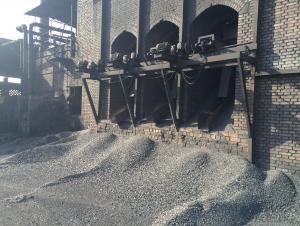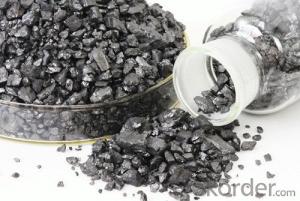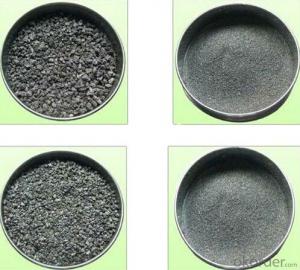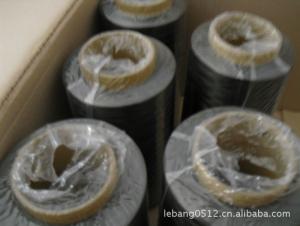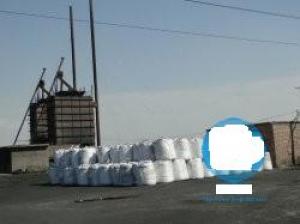FC90 Gas Calcined Anthracite/CNBM GCA China Product
- Loading Port:
- Tianjin
- Payment Terms:
- TT OR LC
- Min Order Qty:
- 0 m.t.
- Supply Capability:
- 100000 m.t./month
OKorder Service Pledge
OKorder Financial Service
You Might Also Like
Packaging & Delivery
| Packaging Detail: | 25kgs/50kgs/1ton per bag or as buyer's request |
| Delivery Detail: | Within 20 days after receiving corect L/C |
Feature
All of our goods are made in the best quality of world famous Tianjin. All of our products are with High carbon, Low ash, low sulphur, Low Moisture.
Usage
The Calcined Anthracite Coal/Gas Calcined Anthracite Coal/Carbon Raiser is mainly used in steelmaking in electrical stove, screening water, shipbuilding sandblast to remove rust. It can reduce the cost of steelmaking effectively by replacing the traditional petroleum coke of carburant.Also can improve the Carbon content in steel-melting and Ductile iron foundry.
Specifications
Calcined Anthracite
Fixed carbon: 90%-95%
S: 0.5% max
Size: 0-3. 3-5.3-15 or as request
PARAMETER UNIT GUARANTEE VALUE | |||||
F.C.% | 95MIN | 94MIN | 93MIN | 92MIN | 90MIN |
ASH % | 4MAX | 5MAX | 6MAX | 7MAX | 8MAX |
V.M.% | 1 MAX | 1MAX | 1.5MAX | 1.5MAX | 1.5MAX |
SULFUR % | 0.5MAX | 0.5MAX | 0.5MAX | 0.5MAX | 0.5MAX |
MOISTURE % | 0.5MAX | 0.5MAX | 0.5MAX | 0.5MAX | 0.5MAX |
Size can be adjusted based on buyer's request.
Picture
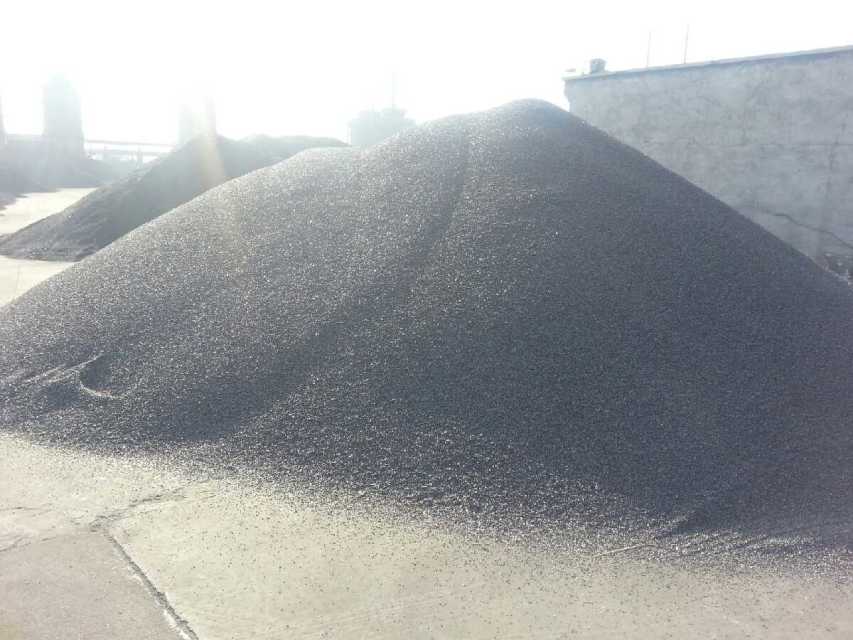
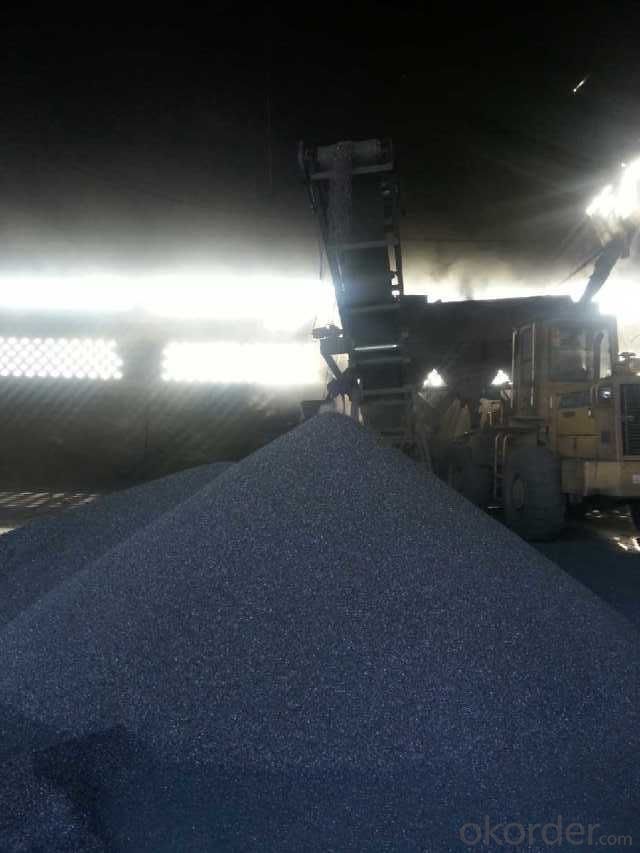


We can supply below furnace charges, please feel free to contact us if you areinterested in any of any of them:
Coke (Metallurgical, foundry, gas)
Calcined Anthracite with fixed carbon from 90% to 95%
Calcined Petroleum Coke
- Q: What are the effects of carbon emissions on the Earth's temperature?
- The Earth's temperature is significantly impacted by carbon emissions, particularly carbon dioxide (CO2), which is due to the greenhouse effect. The greenhouse effect is when certain gases in the Earth's atmosphere trap heat from the sun and prevent it from escaping into space, thus causing the planet to warm. When carbon emissions are released into the atmosphere, they act like a blanket, trapping more heat and making the greenhouse effect worse. This results in global temperatures increasing, commonly known as global warming. The main source of carbon emissions is the burning of fossil fuels such as coal, oil, and natural gas for energy production, transportation, and industrial processes. The accumulation of carbon dioxide and other greenhouse gases in the atmosphere has led to a steady rise in global temperatures over the past century. This temperature increase has various consequences for the Earth's climate system and ecosystems. One immediate impact of increased carbon emissions and global warming is the melting of polar ice caps and glaciers. As temperatures rise, ice melts at a faster rate, causing sea levels to rise. This poses a significant threat to coastal areas, with increased flooding and erosion potentially displacing communities and destroying habitats for different species. Moreover, global warming disrupts weather patterns, resulting in more frequent and severe extreme weather events. Heatwaves, droughts, hurricanes, and heavy rainfall become more common, causing damage to infrastructure, agriculture, and human health. Changes in precipitation patterns also affect water availability, potentially leading to water scarcity in certain regions. The Earth's temperature directly affects ecosystems and biodiversity. Many species are highly sensitive to even slight temperature changes, which can disrupt their natural habitats, alter migration patterns, and impact reproductive cycles. These changes can ultimately lead to the extinction of certain species and disrupt entire ecosystems. Furthermore, the warming of the Earth's temperature can have cascading effects on various natural processes. For example, it can cause the release of additional greenhouse gases from melting permafrost and the degradation of forests, further worsening global warming. In conclusion, the impact of carbon emissions on the Earth's temperature is significant and far-reaching. Global warming caused by increased carbon dioxide levels leads to the melting of ice caps, rising sea levels, extreme weather events, disruptions to ecosystems, and potential loss of biodiversity. Addressing carbon emissions and working towards sustainable practices are essential in mitigating these effects and ensuring a stable and livable planet for future generations.
- Q: What are the impacts of carbon emissions on glacier retreat?
- Glacier retreat is significantly affected by carbon emissions. Human activities, such as burning fossil fuels and deforestation, release carbon dioxide and other greenhouse gases into the atmosphere, contributing to global warming. This rise in global temperatures directly affects glaciers. Glaciers are massive ice bodies that form over long periods from accumulated snowfall. They serve as natural freshwater reservoirs, providing an essential source of drinking water to millions of people worldwide. However, as carbon emissions cause the Earth's temperature to increase, glaciers melt at a faster rate. The warming climate causes glaciers to lose more ice through melting than they gain through snowfall. This results in a net ice loss, leading to glacier retreat. As glaciers retreat, they not only decrease in size but also become thinner. This reduces their water storage capacity, impacting water availability in regions that rely on glacial meltwater for drinking, irrigation, and hydropower. Moreover, glacier retreat has extensive implications for ecosystems and biodiversity. Glaciers offer unique habitats for various species, including plants, animals, and microorganisms that have adapted to survive in extreme environments. As glaciers vanish, these species must adapt or relocate to other areas, disrupting ecosystem equilibrium. The consequences of glacier retreat extend beyond local and regional scales. Glacial meltwater contributes to rivers and lakes, ensuring a consistent water flow throughout the year. As glaciers shrink, this flow diminishes, leading to water scarcity during dry periods. This poses a threat to agriculture, urban water supplies, and the overall sustainability of ecosystems reliant on stable water sources. Additionally, glacier loss contributes to rising sea levels. When glaciers melt, the water they release flows into the oceans, causing them to expand. This worsens coastal erosion, increases the risk of flooding in low-lying areas, and endangers coastal communities and infrastructure. In conclusion, carbon emissions profoundly impact glacier retreat. The resulting global warming accelerates glacier melting, leading to water scarcity, loss of biodiversity, rising sea levels, and various environmental and socio-economic consequences. It is crucial to address carbon emissions and take action to mitigate climate change in order to preserve these crucial ice formations and the ecosystems and communities that depend on them.
- Q: How does carbon impact the growth and development of plants?
- Plants rely on carbon to grow and develop, making it an indispensable element. The process of photosynthesis is where carbon plays a critical role in converting sunlight into energy. During this process, plants absorb carbon dioxide from the atmosphere, along with water, to create glucose and oxygen. Glucose acts as the main source of energy for plant growth and is used to construct various molecules like cellulose, proteins, and lipids. Aside from its role in sugars, carbon is also crucial for the structure of plant cells. It forms the foundation of complex organic compounds, including carbohydrates, proteins, nucleic acids, and lipids. These compounds are vital for plant growth and development, participating in processes like cell division, elongation, and the formation of new tissues. Moreover, carbon regulates various physiological and metabolic processes in plants. It influences the opening and closing of stomata, the tiny pores on leaves that control the intake of carbon dioxide and the release of oxygen and water vapor. Carbon also impacts the production of plant hormones, which regulate growth, development, and responses to the environment. Nevertheless, excessive carbon dioxide in the atmosphere, caused by human activities like burning fossil fuels, can negatively affect plants. Elevated levels of carbon dioxide can alter plant physiology by increasing photosynthesis rates and decreasing stomatal conductance. These changes can affect the nutritional quality of plants, disrupt their interactions with pests and diseases, and disturb ecosystems. To summarize, carbon is essential for the growth and development of plants. It is a key component of sugars, organic compounds, and structural elements in plant cells. Carbon is involved in crucial processes such as photosynthesis, cell division, and the regulation of physiological and metabolic functions. However, changes in atmospheric carbon dioxide levels can have positive and negative effects on plants, emphasizing the importance of sustainable practices to ensure the future growth and development of plant species.
- Q: What are the impacts of carbon emissions on natural disasters?
- Natural disasters are significantly worsened by carbon emissions, leading to increased frequency and intensity. Carbon emissions have a major effect on global warming and climate change, as they cause the Earth's temperature to rise by trapping heat in the atmosphere. This temperature increase results in various weather pattern changes, which ultimately increase the occurrence and severity of natural disasters. One of the most evident consequences of carbon emissions on natural disasters is the stronger and more destructive hurricanes and tropical storms. These storms gain more energy from warmer ocean temperatures, making them more powerful. Additionally, higher temperatures lead to increased evaporation, resulting in heavier rainfall during storms and a higher risk of flooding and landslides. Carbon emissions also contribute to the melting of glaciers and polar ice caps, causing sea levels to rise. This rise in sea levels makes coastal areas more susceptible to storm surges and flooding during hurricanes and typhoons. Low-lying regions and island nations are particularly vulnerable, as they face the potential loss of their land due to rising waters. Moreover, carbon emissions play a role in the occurrence and severity of wildfires. Rising temperatures dry out vegetation, creating ideal conditions for wildfires to ignite and spread rapidly. These wildfires can devastate large areas of land, destroying ecosystems, homes, and livelihoods. Another consequence of carbon emissions on natural disasters is the disturbance of weather patterns. Climate change alters rainfall patterns, leading to longer and more severe droughts in some regions and more frequent and intense rainfall events in others. These changes in precipitation patterns can result in prolonged droughts, water scarcity, and a higher risk of wildfires in some areas, while others face increased flooding and landslides. In conclusion, carbon emissions have a profound impact on natural disasters. They contribute to global warming and climate change, intensify hurricanes, increase the risk of flooding, raise sea levels, fuel wildfires, and disrupt weather patterns. It is crucial to reduce carbon emissions and transition to clean and sustainable energy sources to mitigate these impacts and protect our planet from the devastating effects of natural disasters.
- Q: How is carbon used in the production of paints and pigments?
- Due to its unique properties and versatility, carbon finds wide application in the production of paints and pigments. A primary utilization of carbon is seen in the production of carbon black, which is a fine powder derived from the incomplete combustion of hydrocarbons like coal tar, petroleum, or natural gas. Carbon black proves highly useful as a pigment in various paints, inks, and coatings. The deep shade of carbon black makes it a popular choice for creating intense black pigmentation in paints and pigments. Its exceptional stability and resistance to fading ensure the color remains vibrant over time. Furthermore, carbon black exhibits excellent opacity, effectively covering other colors and providing a solid foundation for further pigmentation. In addition to its role as a pigment, carbon black enhances the durability and performance of paints and coatings. It acts as a reinforcing agent, elevating the mechanical properties of the final product. By increasing strength, toughness, and resistance to abrasion, carbon black ensures the paint or coating is long-lasting and resistant to wear and tear. Moreover, carbon black possesses electrical conductivity, making it a valuable component in specialty coatings, including anti-static coatings and electromagnetic shielding coatings. These coatings are critical in industries such as electronics, automotive, and aerospace, where electrical conductivity or protection against electromagnetic interference is essential. Besides carbon black, other forms of carbon, such as graphite and carbon nanotubes, find application in the production of specialized paints and pigments. Graphite is commonly utilized in high-performance coatings due to its lubricating properties and resistance to extreme temperatures. On the other hand, carbon nanotubes offer unique optical, electrical, and mechanical properties, making them suitable for advanced coatings and pigments in various applications. In conclusion, carbon plays a vital role in the production of paints and pigments by providing intense black pigmentation, enhancing durability, and offering unique properties for specialized coatings. Its versatility as an ingredient ensures the production of high-quality, long-lasting, and visually appealing products in the paint and pigment industry.
- Q: What does carbon nanotubes (5,5) in (5,5) mean?
- 1. will be assumed as the corresponding nanotube (cut after) / graphene planar monolayer of carbon atoms (Figure 1)For hexagonal packing, marking the best method for the definition of the two unit vector (unit vector), the A1 and A2 arrow.A1 and A2 interval is 60 degrees.2. (5,5) refers to 5<a1>+5<a2>, (note that is a vector addition) more widely expressed as:(m, n) = m*<a1> + n*<a2>;
- Q: What are the advantages of carbon nanotube transistors?
- Carbon nanotube transistors offer several advantages compared to traditional silicon-based transistors. Firstly, carbon nanotubes have excellent electrical properties. They possess high electron mobility, which means that electrons can move through them quickly and easily. This allows for faster switching speeds and higher operating frequencies, making them ideal for high-performance applications such as computers and communication devices. Secondly, carbon nanotubes have a very small size. They can be as small as a few nanometers in diameter, which is several orders of magnitude smaller than the feature sizes of silicon transistors. This miniaturization potential enables the development of highly compact and densely packed electronic circuits, leading to higher integration levels and increased device functionality. Additionally, carbon nanotubes are more resistant to heat and have better thermal conductivity than silicon. This means that they can handle higher temperatures without degrading, allowing for more efficient operation and reducing the need for complex cooling systems. It also enables the fabrication of devices that can withstand harsh environments, making them suitable for applications in aerospace, automotive, and defense industries. Furthermore, carbon nanotubes are mechanically strong and flexible. They can be bent and stretched without breaking, making them suitable for use in flexible electronics and wearable devices. Their mechanical robustness also ensures long-term stability and reliability, leading to improved device performance and longevity. Lastly, carbon nanotube transistors can be fabricated using existing manufacturing processes, making them compatible with current semiconductor technologies. This means that they can be integrated into existing electronic systems without significant modifications, reducing the cost and time required for their implementation. Overall, the advantages of carbon nanotube transistors, including their high electrical performance, small size, thermal stability, mechanical strength, and compatibility with existing manufacturing processes, make them a promising alternative to traditional silicon transistors for future electronic applications.
- Q: What are the effects of carbon dioxide on ocean acidity?
- Carbon dioxide (CO2) has a significant impact on ocean acidity, leading to a phenomenon known as ocean acidification. When CO2 is released into the atmosphere through human activities such as burning fossil fuels, it gets absorbed by the oceans. This absorption process triggers a series of chemical reactions that result in the formation of carbonic acid, which lowers the pH of the seawater. The increased concentration of carbonic acid in the oceans disrupts the delicate balance of carbonate ions, which are essential for the formation of calcium carbonate. Many marine organisms, including coral reefs, shellfish, and plankton, rely on calcium carbonate to build their shells and skeletons. As the ocean becomes more acidic, the concentration of carbonate ions decreases, making it increasingly difficult for these organisms to form and maintain their protective structures. Ocean acidification poses a significant threat to marine ecosystems and biodiversity. Coral reefs, for example, are particularly vulnerable to the effects of acidification. As the acidity increases, the coral's ability to build and maintain its calcium carbonate structure is compromised, leading to the bleaching and eventual death of the reef. This loss of coral reefs has severe consequences for the countless species that depend on these ecosystems for food, shelter, and reproduction. Furthermore, ocean acidification also affects other marine organisms, such as shellfish and plankton. Shellfish, including oysters, clams, and mussels, depend on calcium carbonate to form their shells. As the acidity rises, the availability of carbonate ions decreases, making it harder for these organisms to build their protective shells. This, in turn, can result in reduced populations of shellfish, impacting not only the organisms themselves but also the industries and communities that rely on them for economic and cultural reasons. Plankton, which are the foundation of the marine food web, are also susceptible to the effects of increased ocean acidity. Many plankton species have calcium carbonate structures that provide them with buoyancy and protection. As the acidity rises, these structures weaken, making it harder for plankton to survive and reproduce. This disruption in the plankton community can have far-reaching consequences for the entire marine food chain, impacting fish, marine mammals, and ultimately, humans who rely on seafood as a primary source of protein. In conclusion, the effects of carbon dioxide on ocean acidity are significant and alarming. Ocean acidification threatens the health and stability of marine ecosystems, impacting vital organisms like coral reefs, shellfish, and plankton. Understanding and addressing this issue is crucial for the long-term health of our oceans and the countless species that depend on them.
- Q: Why are biological molecules carbon based molecular aggregates?
- C is the core elements of life. C is the most basic element of a cell. C accounts for 56% of the cell dry weight and is the most important element.
- Q: What is carbon black used for?
- Carbon black is primarily used as a pigment in various industries, such as rubber, plastics, printing inks, and coatings. It provides color, enhances durability, and improves the overall performance of the products it is incorporated into.
Send your message to us
FC90 Gas Calcined Anthracite/CNBM GCA China Product
- Loading Port:
- Tianjin
- Payment Terms:
- TT OR LC
- Min Order Qty:
- 0 m.t.
- Supply Capability:
- 100000 m.t./month
OKorder Service Pledge
OKorder Financial Service
Similar products
Hot products
Hot Searches
